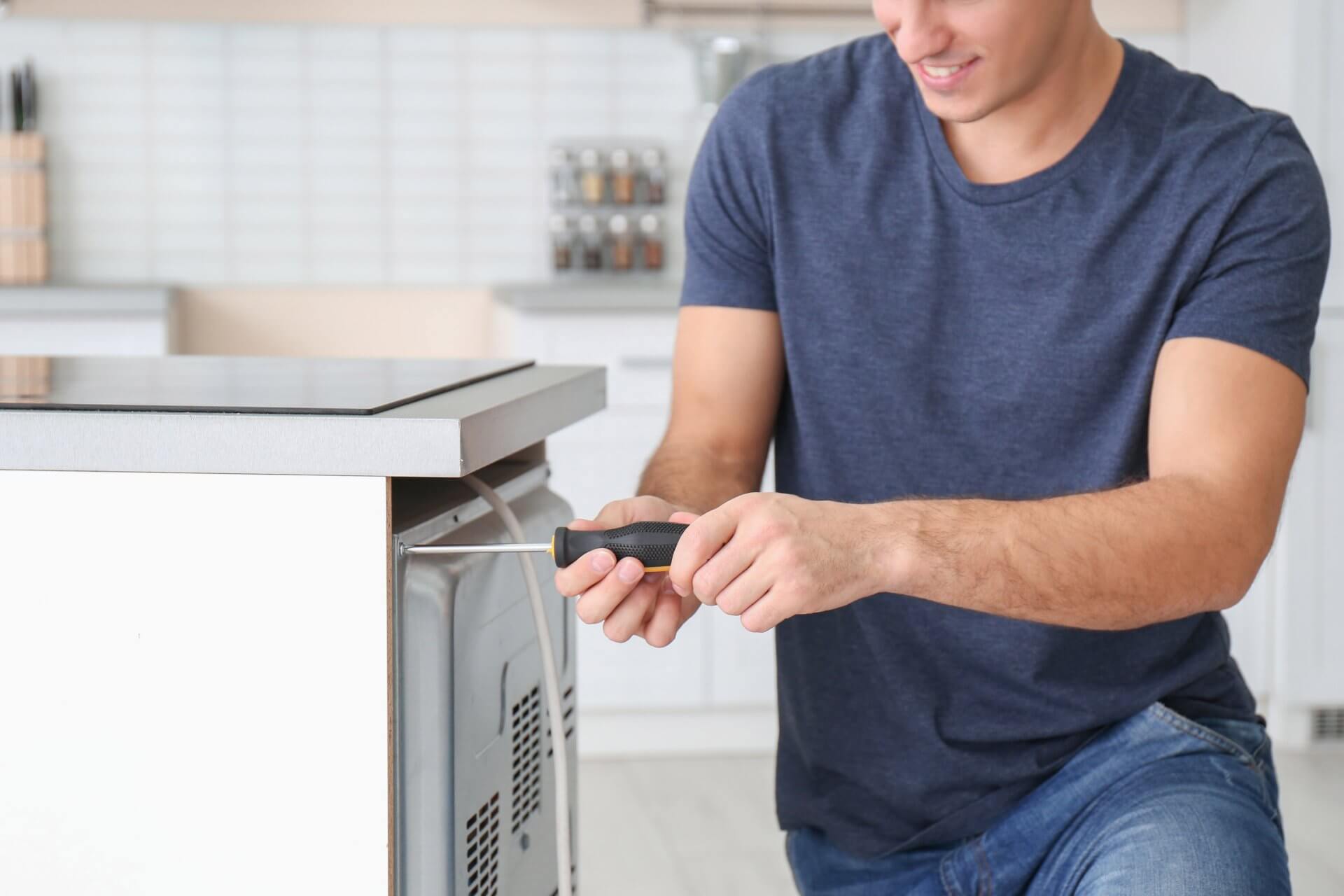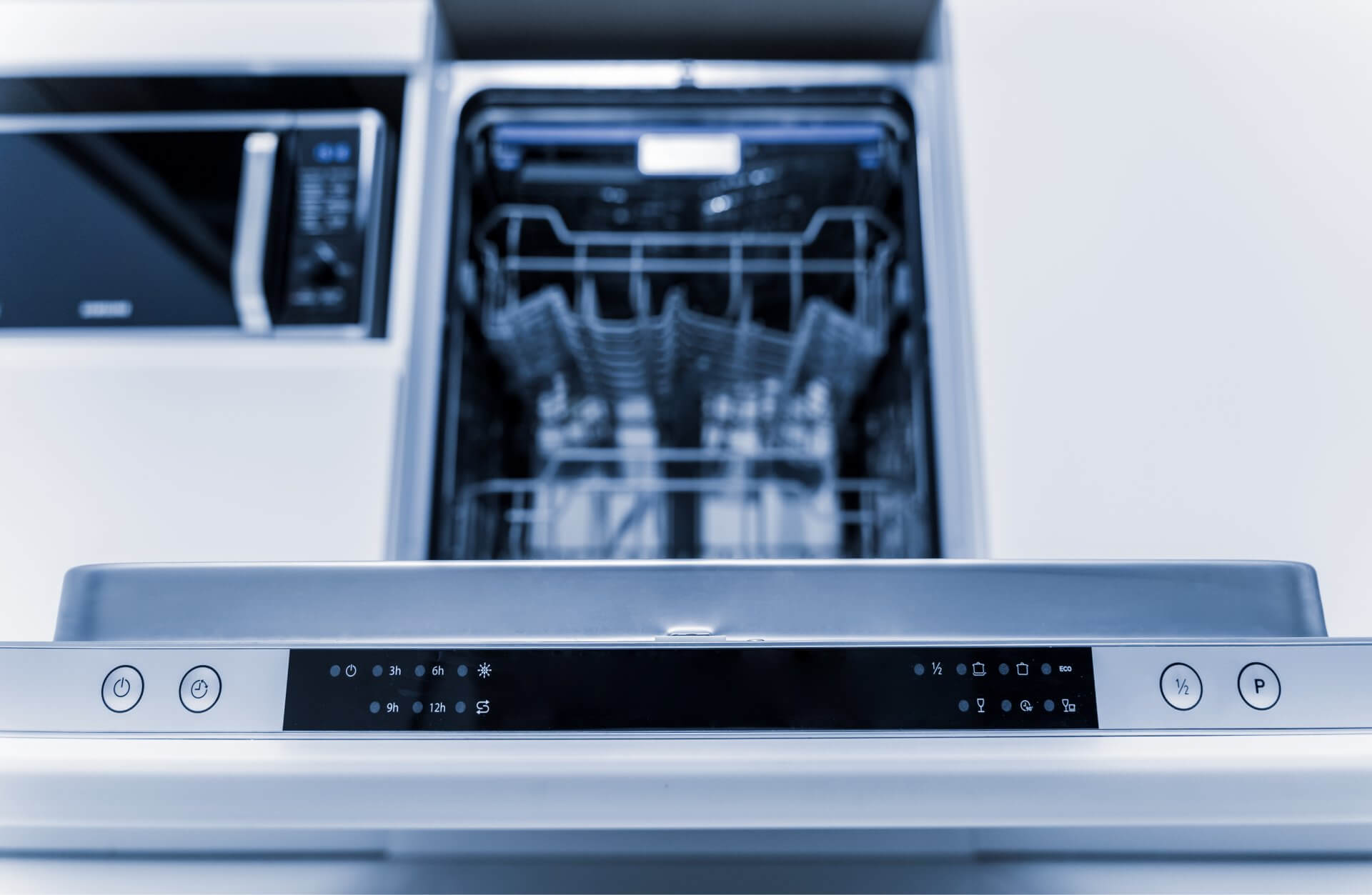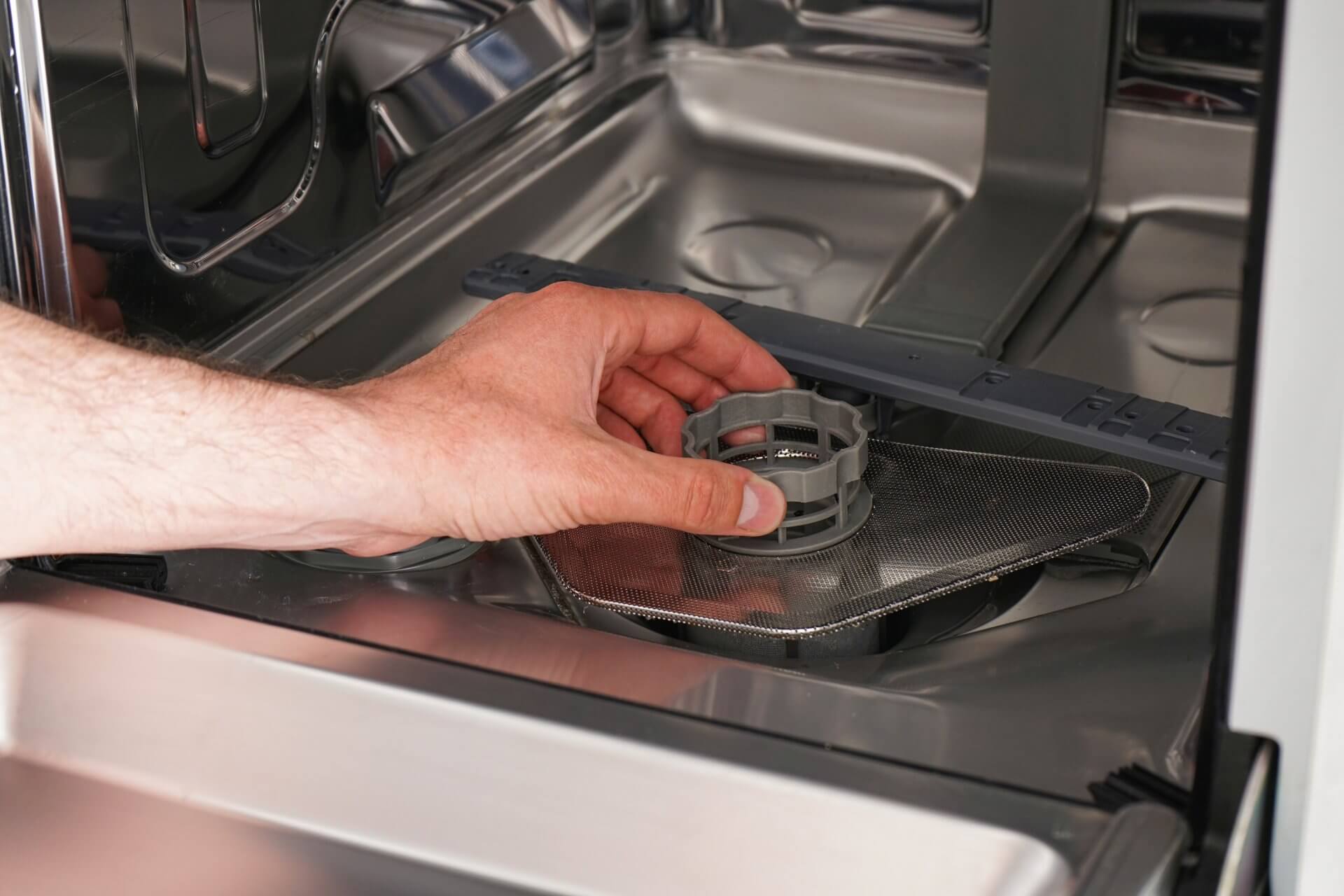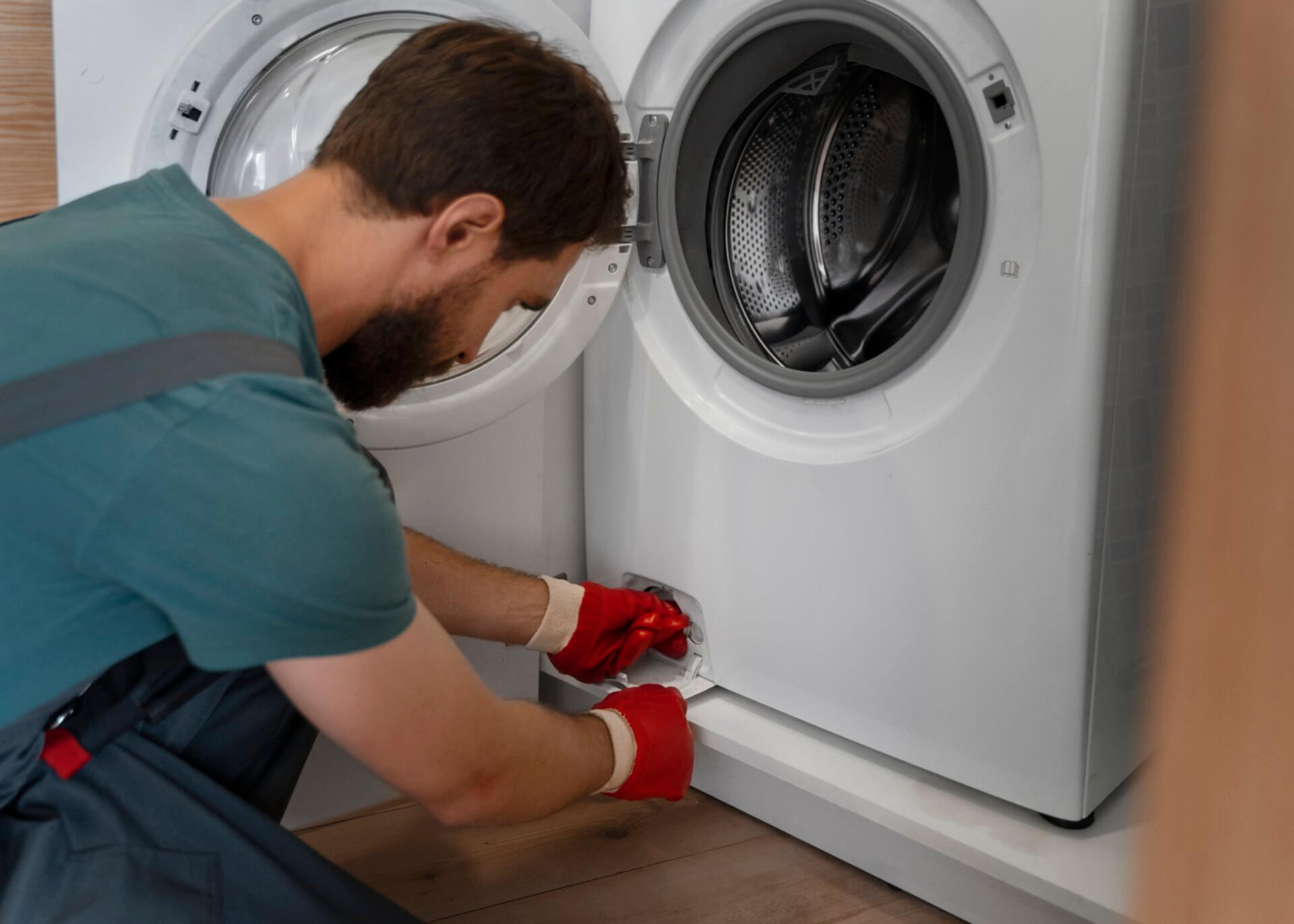Dishwasher Making Noise? 6 Common Sounds Explained & Fixed | Australian Guide
That sudden grinding, clanking, or buzzing from your dishwasher can stop you in your tracks. Is it about to break down completely? Should you call a repair service right away? When your dishwasher starts making strange noises, it's not just annoying – it's often a warning sign that something needs attention before it turns into a costly repair.
After helping hundreds of homeowners diagnose their noisy dishwashers, I can tell you that approximately 80% of unusual dishwasher sounds can be resolved with simple DIY fixes. This guide will walk you through the most common dishwasher noises, what they mean, and exactly how to silence them without breaking the bank on service calls.

Common Dishwasher Noises and What They Mean
Before diving into solutions, it helps to understand what different sounds indicate. When your dishwasher makes unusual noises, it's typically one of these issues:
- Grinding or scratching — Often caused by small items caught in the pump or spray arms
- Buzzing or humming — Usually indicates pump or motor problems
- Banging or thumping — Typically spray arm hitting items or installation issues
- Clicking followed by silence — Often related to control or electrical problems
- High-pitched whining — Frequently points to pump or motor bearing issues
The good news? About 75% of these problems can be fixed with basic DIY skills and minimal tools.
6 Common Dishwasher Sounds and How to Fix Them
1. Grinding, Scratching or Rattling Noises
When You'll Hear It:
- During the wash or rinse cycles
- Sound may move around the dishwasher
- Often sounds like something is being "chewed up"
- May be accompanied by poor cleaning performance
This is one of the most common complaints and is typically caused by small foreign objects – toothpicks, broken glass, fruit stickers, or small utensils – caught in either the spray arms or the pump assembly.
DIY Fix:
- Stop the dishwasher immediately — Continuing to run it could cause more damage
- Check the spray arms:
- Remove the bottom dish rack
- Locate the spray arms (propeller-like devices at the bottom and possibly middle of the dishwasher)
- Remove them by either unscrewing or unclipping (check your manual if unsure)
- Look for trapped objects or food debris
- Check for cracks or damage to the spray arms themselves
- Ensure spray arm holes aren't clogged with debris
- Inspect the dishwasher floor:
- Remove any visible debris from the bottom of the dishwasher
- Check around the filter and drain area for small items
- Check the filter assembly:
- Most modern dishwashers have a cylindrical or flat filter in the bottom
- Remove and clean it following manufacturer instructions
- Look for trapped items like fruit stickers, small bones, or broken glass
Pro Tip: Running a monthly cleaning cycle with a dishwasher cleaner helps prevent buildup that can cause both noise and performance issues. I recommend this to all my clients as preventative maintenance.

2. Buzzing or Humming Followed by No Action
When You'll Hear It:
- When the dishwasher should be filling or draining
- Often at the beginning of the cycle
- The sound continues but nothing happens
- May be accompanied by error codes on digital models
This type of noise typically indicates a problem with the water pump, drain pump, or inlet valve – essentially, the dishwasher is trying to perform an action but can't complete it.
DIY Fix:
- Check water supply:
- Ensure the water supply valve under the sink is fully open
- Verify there's water pressure in other taps
- For buzzing during fill stage:
- Inspect the inlet valve (located behind the lower access panel where the water line connects)
- Look for debris caught in the valve screen
- Check for kinked supply lines
- For buzzing during drain stage:
- Clear the drain path:
- Remove and clean the filter assembly
- Check the drain hose for kinks or blockages
- Ensure the air gap (if your installation has one) is clear
- Test the drain pump:
- Listen for normal humming versus struggling sounds
- If the pump makes noise but doesn't move water, it may be jammed or failing
Safety Note: According to AS/NZS 3000 (Australian Electrical Safety Standards), always disconnect power before accessing internal components. If you're not comfortable working with water and electrical connections, this might be where professional help makes sense.

3. Banging, Knocking or Thumping Sounds
When You'll Hear It:
- During the main wash cycle
- Often rhythmic, coinciding with spray arm rotation
- May stop if you open and adjust items
- Sometimes only occurs with certain types of loads
This classic dishwasher complaint is usually caused by either improper loading or installation issues.
DIY Fix:
- Check for spray arm obstruction:
- Open the dishwasher mid-cycle (carefully!)
- See if spray arms are hitting any items
- Rearrange tall items like cutting boards or large pots that might block movement
- Inspect for proper loading:
- Ensure cups or lightweight plastic items haven't flipped and filled with water
- Check that utensils aren't falling through the basket
- Verify that nothing protrudes below the bottom rack
- Check installation and levelling:
- Use a spirit level to check if the dishwasher is level from side to side and front to back
- Adjust the feet at the front of the unit if necessary
- Ensure the unit is secured properly to cabinets or countertop
- Verify anti-hammer device:
- Some plumbing systems have water hammer arrestors
- If banging occurs during fill cycles, you might need to install one on your water supply line
Loading Tip: Always secure lightweight plastic items on the top rack, either in dedicated holders or weighed down with heavier items nearby. This prevents them from becoming spray arm obstacles.

4. Clicking Followed by Silence (No Operation)
When You'll Hear It:
- When you first start the dishwasher
- A few clicks followed by nothing happening
- May be accompanied by lights but no action
- Sometimes happens intermittently
This type of problem usually indicates an electrical control issue or safety feature activation.
DIY Fix:
- Reset the dishwasher:
- Turn off power at the circuit breaker for 5 minutes
- Restore power and test operation
- Check door latch mechanism:
- Ensure the door is properly closing and latching
- Look for food debris around the latch preventing proper closure
- Test the door switch by pressing it manually (with power disconnected)
- Inspect for water in the base:
- Some models have leak detection systems that prevent operation
- Remove the lower access panel and check for standing water
- Trace and fix any leaks before resetting
- Check the thermal fuse or protector:
- If the dishwasher has overheated, a thermal cutout may have triggered
- This requires accessing the control area and potentially testing components with a multimeter
Quick Test: If your dishwasher makes clicking sounds but won't start, try pressing firmly on the door while starting. If it then works, you likely have a door latch or switch problem.

5. High-Pitched Whining or Squealing
When You'll Hear It:
- Throughout the cycle, getting worse over time
- Particularly noticeable during pumping activities
- May change pitch with different cycles
- Often gets progressively louder over weeks or months
This distinctive noise typically indicates bearing wear in either the circulation pump or drain pump motors – a common issue in dishwashers over 5 years old.
DIY Fix:
- Identify the source:
- Listen carefully to determine if the noise occurs during wash, drain, or both
- Drain pump noises are usually only heard during draining
- Circulation pump noises occur throughout the wash cycle
- Inspect for obstructions first:
- Sometimes small objects can cause similar sounds
- Clean filters and pump areas thoroughly before assuming bearing failure
- Check the circulation pump:
- This usually requires removing the lower spray arm and access panels
- Look for signs of water leakage around the pump seal
- Test for excess movement in the motor shaft
- Drain pump inspection:
- Located at the bottom of the dishwasher
- Check for debris around the impeller
- Test for free movement when rotated by hand
When replacement is needed:
- Pump assemblies typically cost $100-200 in Australia
- This repair requires moderate DIY skills
- Consider overall dishwasher age and condition before investing
Age Factor: If your dishwasher is over 8 years old and developing motor noise, weigh repair costs against replacement. Modern dishwashers use up to 50% less water and energy than older models, possibly making upgrade more economical.

6. Sizzling, Hissing or Steam Noises
When You'll Hear It:
- During or just after the drying cycle
- Sometimes during the main wash with very hot water
- Often accompanied by visible steam when opened
- May be more noticeable in winter months
Unlike other noises on this list, mild sizzling and steam sounds are actually normal in many dishwashers, particularly those with condensation or heated drying systems.
DIY Assessment:
- Understand your drying system:
- Heated drying systems often create steam and condensation noises
- Condensation drying systems pull moisture onto cooler outer walls
- Check if noise is excessive:
- Some sizzling is normal as water hits hot surfaces
- Extremely loud sizzling or "frying" sounds are not normal
- Inspect for proper drainage:
- Ensure the dishwasher fully drains between cycles
- Check that the heating element isn't submerged due to drainage issues
- Verify normal operation:
- Steam escaping around the door during drying is normal
- Excess water or detergent leaking onto hot elements is not normal
Temperature Note: According to Australian standards, dishwashers typically heat water to 60-75°C during the wash cycle and can reach 80°C during drying. This makes some steam and condensation noises perfectly normal.

Prevention: Keep Your Dishwasher Running Quietly
The best way to deal with dishwasher noises is to prevent them in the first place:
- Scrape plates thoroughly before loading to prevent debris in the pump and filter
- Clean the filter weekly — This 2-minute task prevents 60% of common noises
- Run monthly cleaning cycles with a dishwasher cleaner to remove buildup
- Check spray arms quarterly for clogged holes and free movement
- Secure the dishwasher properly to cabinets to prevent movement noises
- Load items properly according to manufacturer guidelines
When to Call a Professional
While these DIY fixes resolve the majority of dishwasher noise issues, there are times when professional help is warranted:
- You've tried the appropriate DIY fixes without success
- The noise is accompanied by water leakage
- You notice electrical issues (tripping breakers, burning smells)
- Your dishwasher is under warranty (DIY repairs might void coverage)
- The repair requires specialised tools or extensive disassembly
Conclusion
A noisy dishwasher is certainly annoying, but as you can see, diagnosing and fixing the problem is often simpler than you might expect. In my experience, about 80% of dishwasher noise problems are solved with the first three fixes alone – removing obstructions, checking the pump, and ensuring proper loading and installation.
Taking care of these simple maintenance tasks regularly can extend the life of your dishwasher by years and save you from the frustration of persistent noises. Your dishwasher is designed to last 8-12 years with proper care – don't let preventable noise issues force you into a premature replacement!

Frequently Asked Questions (FAQs)
Is it normal for a dishwasher to make some noise during operation? Yes, normal dishwasher sounds include a moderate humming from the pump, water swooshing, slight clicking as the timer advances, and soft sizzling during drying. Loud grinding, banging, or high-pitched whining are not normal.
My dishwasher makes a loud noise just at the beginning of the drain cycle—what's causing this? This common complaint is typically the drain pump engaging and beginning to clear water. A momentary noise is normal, but if it's excessively loud or continues throughout draining, your drain pump might have debris caught in it or failing bearings.
How often should I clean my dishwasher filter? For optimal performance and noise prevention, clean your dishwasher filter weekly if you use it daily, or every 2-3 weeks for less frequent use. Homes with hard water (common in many Australian regions) may need more frequent cleaning.
What's that terrible grinding sound when I first start the dishwasher? A grinding sound at the beginning of a cycle is most often caused by food debris or small items caught in the chopper blade area or pump. Stop the dishwasher immediately and check the filter and pump area for foreign objects.
How can I tell if dishwasher noises indicate a serious problem? Consider these factors: 1) Is the noise getting progressively worse? 2) Is it accompanied by poor cleaning performance? 3) Do you notice leaks or electrical issues? If you answered yes to any of these, the problem likely requires prompt attention.
How much does it cost to repair a noisy dishwasher pump in Australia? Professional pump replacement typically costs $250-450 including parts and labour in major Australian cities. DIY replacement costs $100-200 for parts only but requires moderate technical skills. Check if repairs are covered under Australian Consumer Law warranty protection.

About Julian
Home appliance enthusiast and DIY repair specialist with a passion for helping others save money on appliance maintenance.
Related Articles

Dishwasher Not Cleaning Properly? 7 Expert Solutions That Work

Dishwasher Not Draining? 5 Simple DIY Fixes That Actually Work

